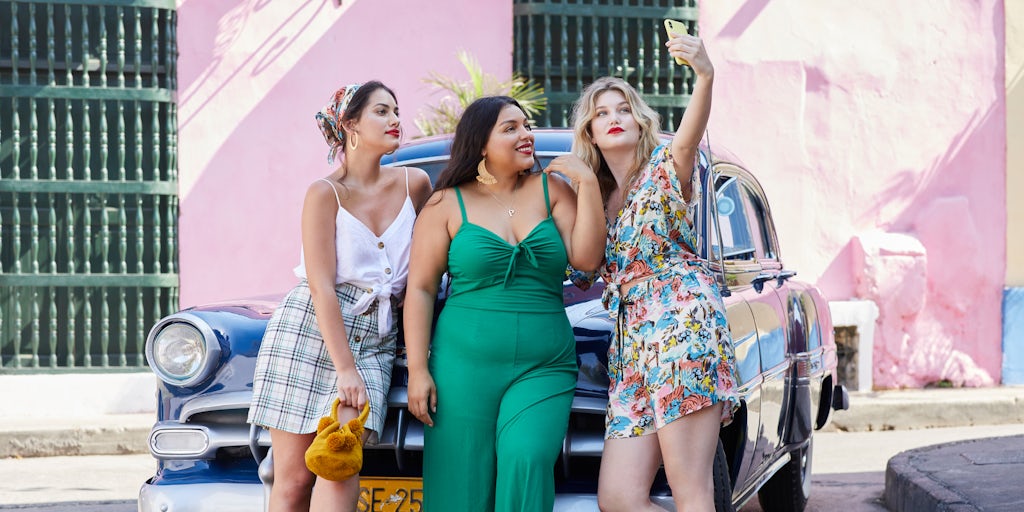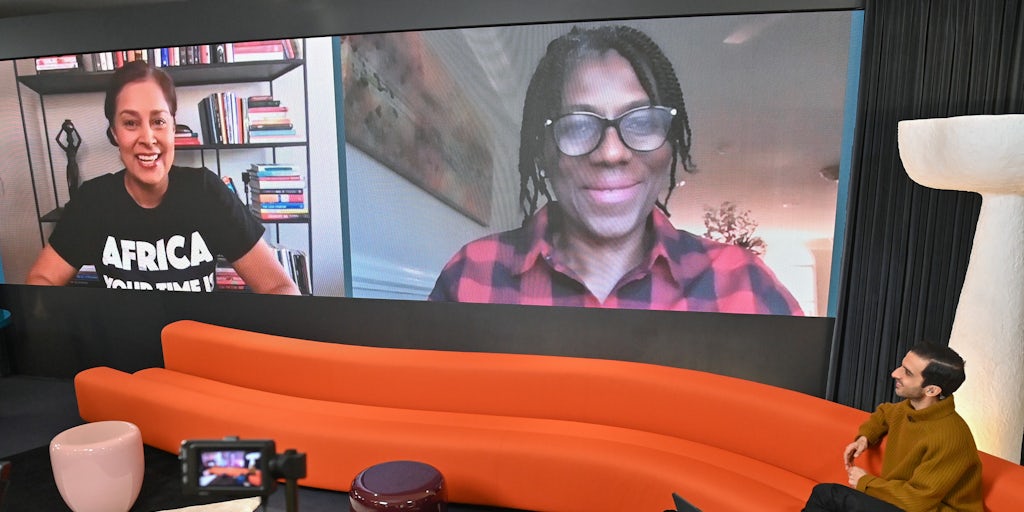What Fashion Can’t Seem to Get Right About the Plus-Size Market | BoF Professional, News & Analysis
When White House Black Market, the American mall fixture known for its contemporary separates, launched a plus-size line in 2017, it was a publicity coup, generating favourable coverage from fashion blogs and even NBC’s Today Show. Marie Denee, publisher of The Curvy Fashionista blog, was among those praising the launch.
“We are so geeked,” she wrote.
Two years later, the retailer made another appearance on The Curvy Fashionista. This time, it was for killing its plus-size range, which Denee called “a very sad thing to see.” The company did not respond to a request for comment from BoF.
In some ways, it’s never been a better time to shop for plus sizes. Hundreds of brands, in categories ranging from lingerie to formalwear, have introduced plus-size lines or incorporated additional sizes into their collections. Even in the midst of the pandemic last year, Missguided increased the number of plus-size styles it sold by 42 percent, according to Edited, and Nordstrom plans to expand plus-size offerings in its stores later this year. Coresight Research estimates plus-size women’s clothing sales totalled $28.3 billion last year, or about 21 percent of the overall market.
But many retailers are still struggling to get the category right, launching plus-size lines to great fanfare, only to quietly discontinue them when sales fail to match the early hype. The reasons differ from brand to brand, including marketing using outdated imagery and terms, or sizing issues with the clothes themselves. Denee said it often comes down to a lack of commitment to serving customers who fall outside traditional beauty standards.
“You have brands who … don’t give it the same attention,” Denee said. “And then, when it doesn’t perform after they only give it one quarter or one season, they give up.”
For struggling brands, plus-size lines can wind up on the chopping block, as the clothes are often more expensive to make. Many companies also responded to plunging apparel sales during the pandemic by cutting back their offerings to only the top-selling and highest-margin items. Plus-size fashion didn’t always make the cut.
That’s a short-sighted approach, analysts at Edited recently wrote. While the majority of clothes available online are size eight or below, the average American woman wears a size 16.
“Not only does this risk alienating the next generation of consumers, [but] average or above-average sized shoppers … are underserved,” Edited wrote. “Retailers may be walking away from a profit to uphold a distorted and outdated image standard.”
An Unmet Opportunity
Many brands have seized on that mismatch between the fashion industry’s idea of the average customer’s body and the reality. Savage X Fenty launched in 2018 with a range that reached a size 22, and cast plus-size models in its campaigns, including a much-hyped runway show streamed by Amazon. The brand reportedly brought in $150 million in revenue in 2019, though it is not yet profitable, according to The New York Times. Good American, the size-inclusive denim brand co-founded by Emma Grede and Khloe Kardashian, saw $1 million in sales on its first day and has expanded into loungewear, shoes and other categories.
The cornerstone of brands’ marketing strategies was that the clothes were available to — and would look great on — any customer who wanted them. Brands that pioneered this strategy touched a nerve: Christian Siriano told Elle that adding sizes up to 26 tripled his business.
Body positive marketing messages haven’t always met with such a warm reception.
When Mango launched its plus-size line, Violeta by Mango, in 2014, the response was equal parts adulation and fury. At the time, Mango designated clothes above a size 12 as “plus” (generally that label is applied to sizes 16 and above). The line’s campaign imagery featured “plus” models who appear to just barely fall into the plus category, sparking further backlash, including an online petition calling for the line to be shuttered. Some also found the clothes uninspired.
“What is the point of launching a plus-size line if you’re just going to offer the same shapeless shift dresses and elastic f*$king waist-banded crap as everyone else?” Tyler McCall wrote in Fashionista.
In 2021, Mango said it would close Violeta and integrate plus-size styles into its main collection.
“The ambitious growth plans for our plus-size collection and our commitment to inclusion and diversity have led us to rethink the portfolio of our lines,” the brand said.
Sending the Right Message
Plus-size fashion is often about more than the size number on the tag. As Mango’s example showed, the wrong marketing, boring looks and bad fits can instantly sour customers on a brand’s entire plus or extended line.
“Brands that look to … introduce a plus range as a box-ticking exercise or a quick cash-grab without putting in the legwork will not last,” said Kayla Marci, Edited retail analyst.
Making sure the clothes actually fit and are in line with consumer tastes is table stakes. Retailers also need to feature plus-size models in their campaigns and be up to date on the conversation around body image. “Plus-size” and “extended sizing” mean different things within the plus-size community, Denee said. Plus-size refers to sizes typically ranging from a US 14 to a US 24, while extended sizing extends beyond that, in some cases up to a US size 40. Use the wrong term, and consumers might assume a brand doesn’t carry their size.
The marketing platform Persado found that describing dresses as size 16 to 30 was more effective than language such as “flattering dresses” or “dresses for every woman.” Persado also found that although the concept of “self-love” has become a marketing cliche, phrasing specific to plus-size consumers, such as “celebrating your curves,” still drives sales.
Creating an Inclusive Store Experience
Stores can be a minefield for plus-size shoppers. Retail associates may have difficulty recommending the right fit or styles for a wide range of body types and can speak to customers in ways they might find insulting.
It’s like you’re dating us in the dark … Yeah, we can put you on our website, but we don’t want you in our stores.
In January, Gap-owned athleisure brand Athleta said it would require its 5,500 retail associates to undergo size-inclusive training sessions to complement its expansion into plus-size offerings. The brand said the curriculum “teaches the principles of body-positive appropriate language such as words to avoid, reading customer’s body language to meet them where they’re at with positive language and provides tools for assessing comfort level to better serve all of our customers.”
Although the brand featured plus-size consumers in its social media profiles before the January launch, its stores, at least visually, still appeared to cater to straight size offerings. Now, Athleta stores will include mannequins with more diverse body shapes. The brand offers up to women’s size 26, or 3X. (Athleta declined an interview with BoF.)
No More Courting Plus-Size “In the Dark”
Many brands don’t stock their full size range in stores at all — a fact that isn’t lost on customers.
“It’s like you’re dating us in the dark,” Denee said. “Yeah, we can put you on our website, but we don’t want you in our stores.”
In 2018, Nordstrom committed to offering more extended sizes across 100 brands in 30 of its stores. Since then, the retailer has worked with brands like Naked Wardrobe to extend their size offerings, which are initially sold exclusively through Nordstrom.
On the whole, brands must consider the investment in plus-size lines to really be an investment in their plus-size consumers.
“They don’t bring us in the store, they don’t include us in marketing, they don’t include us in physical events or fashion shows or campaigns,” Denee said. “But then they get mad that their plus-size [line] is not performing. Do you really even know we exist?”
Related Links:
Unravelling the Plus-Size Problem
How to Make Your Brand Size-Inclusive
The Next Big Activewear Opportunity





